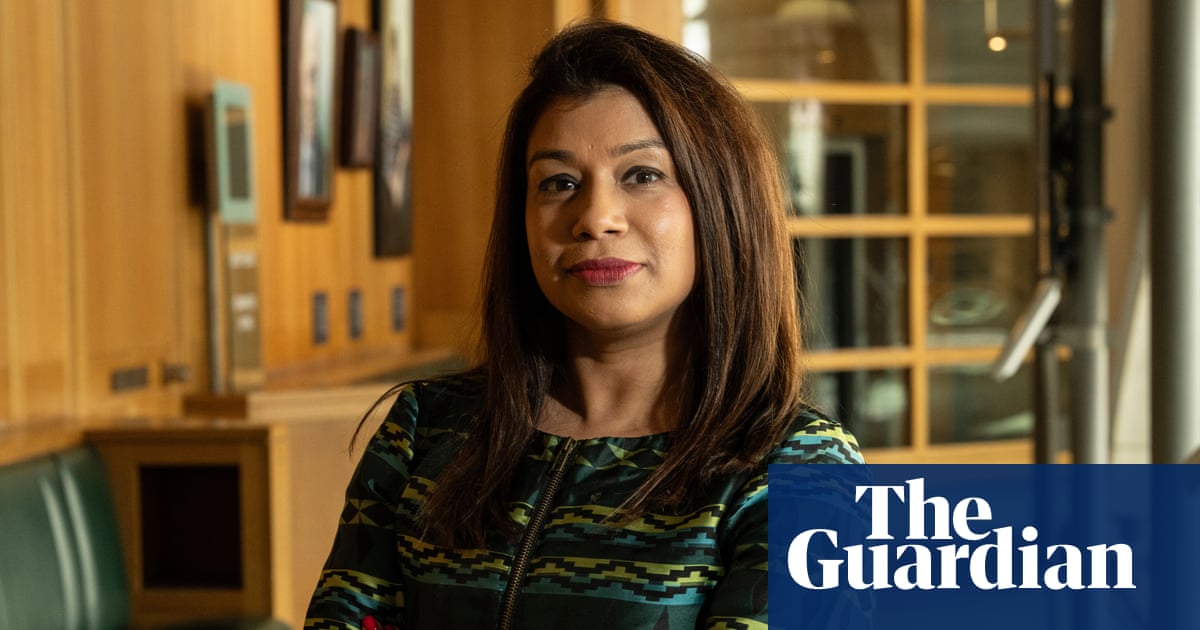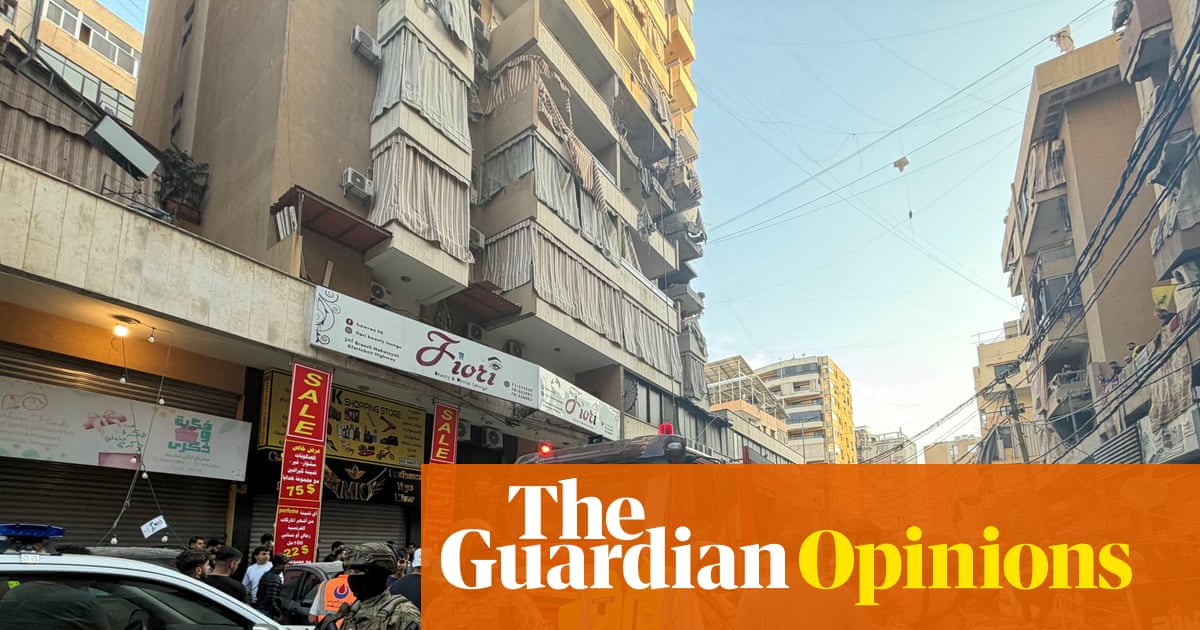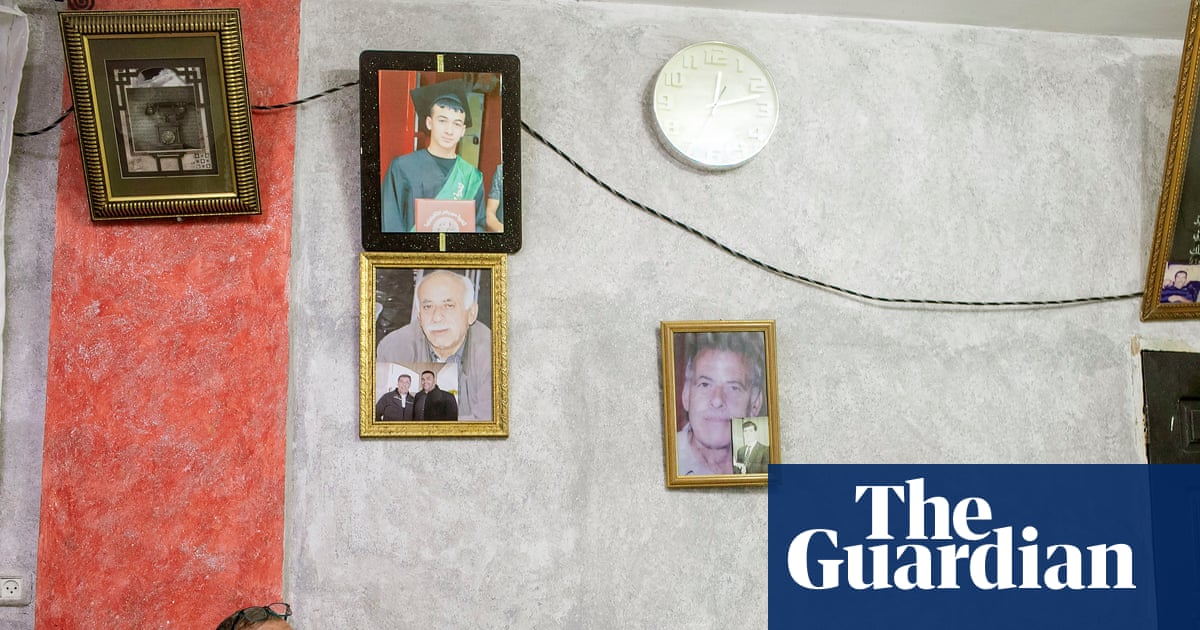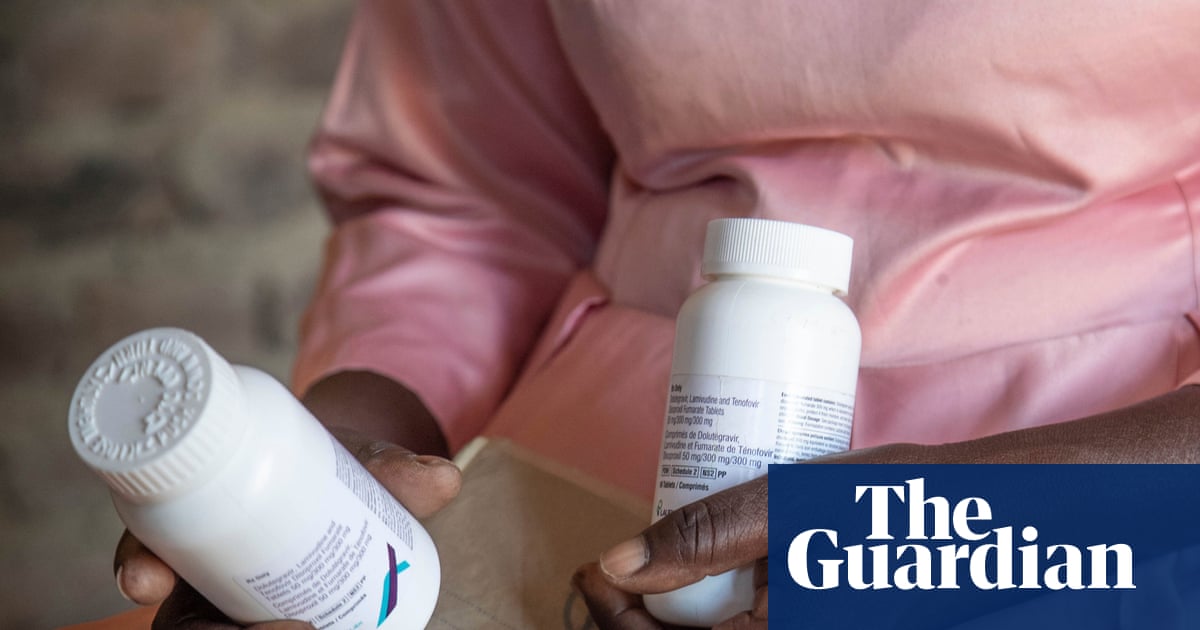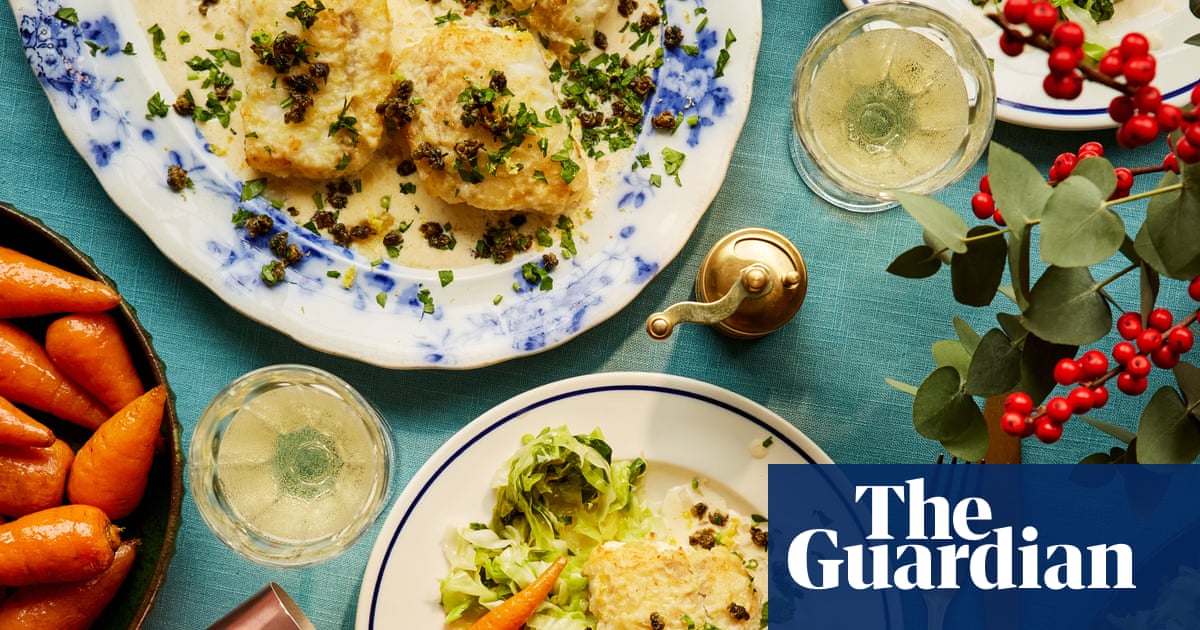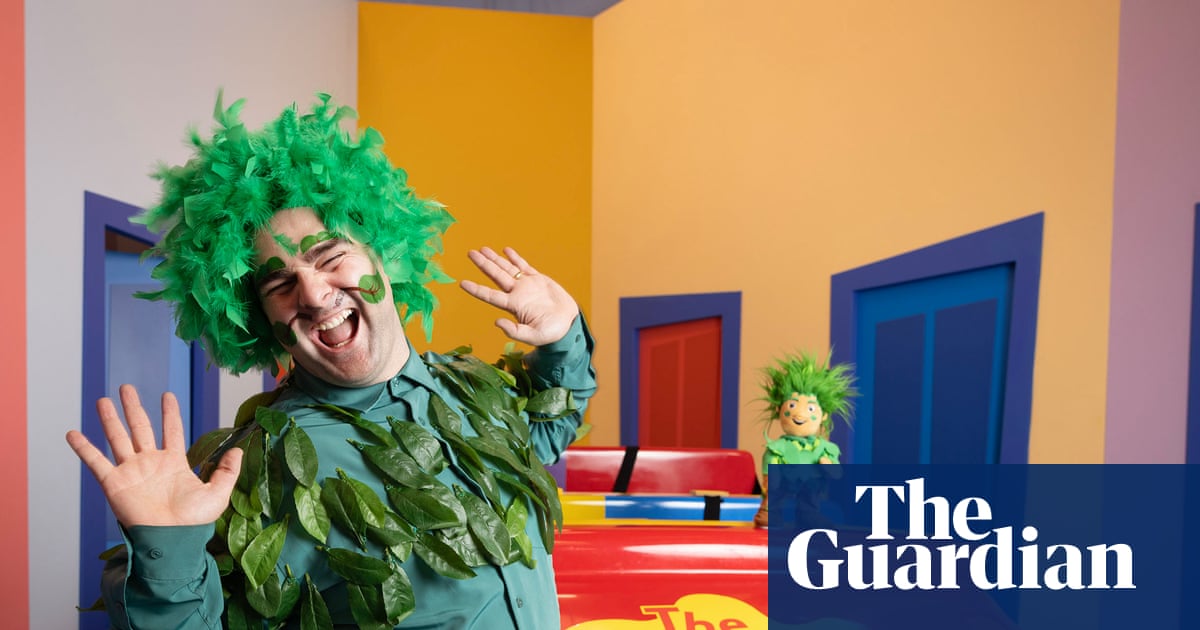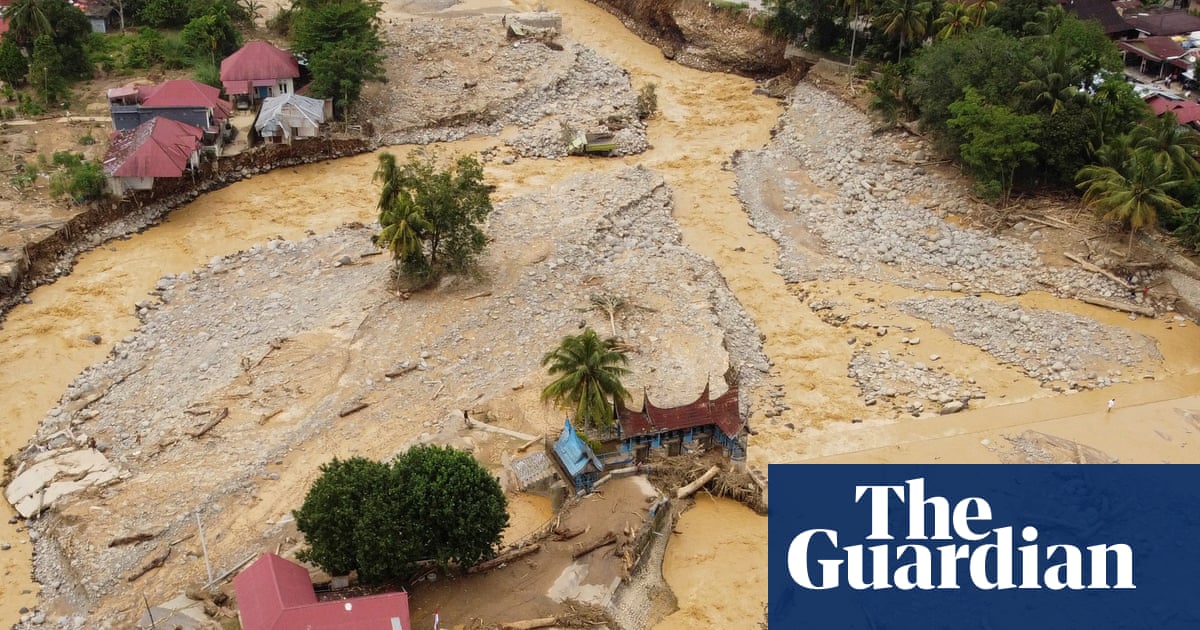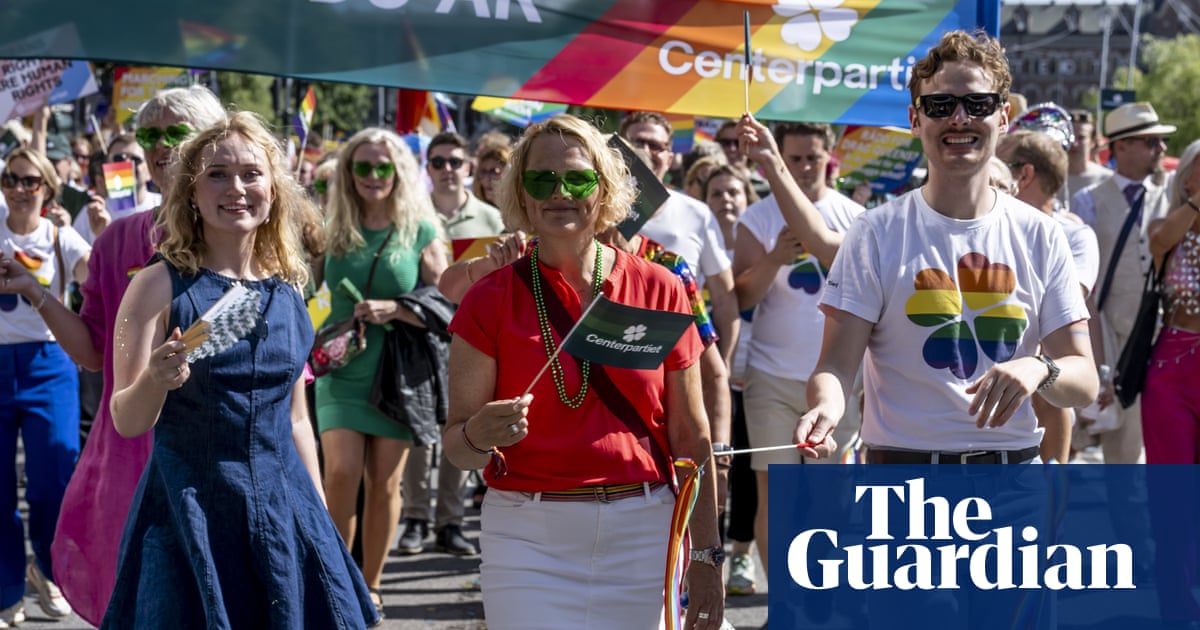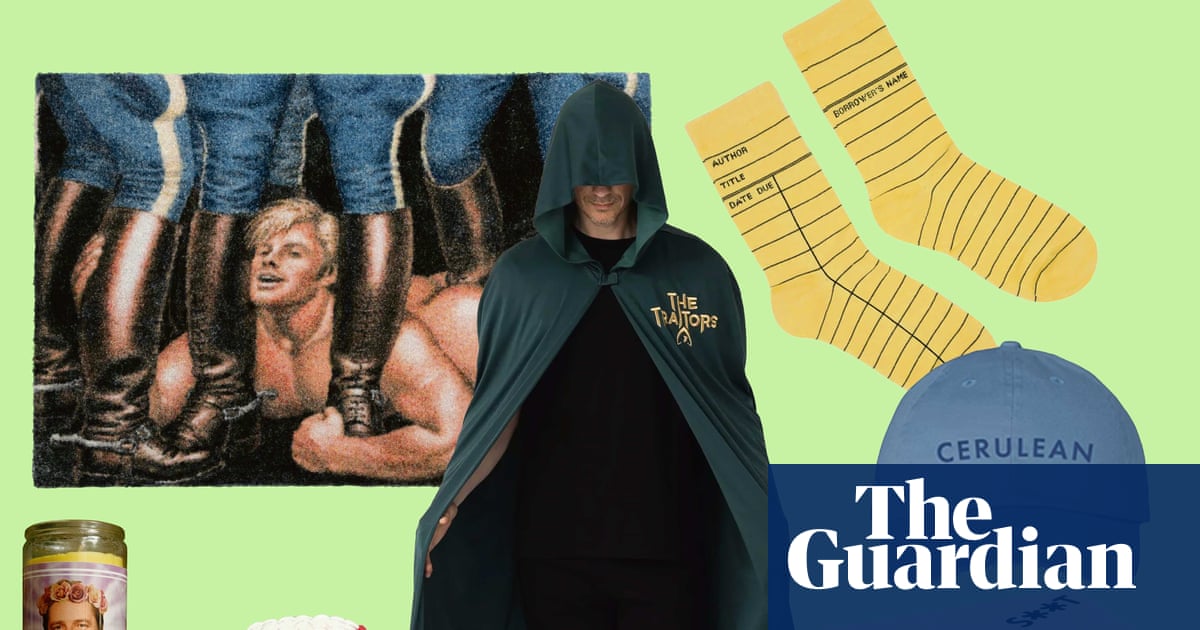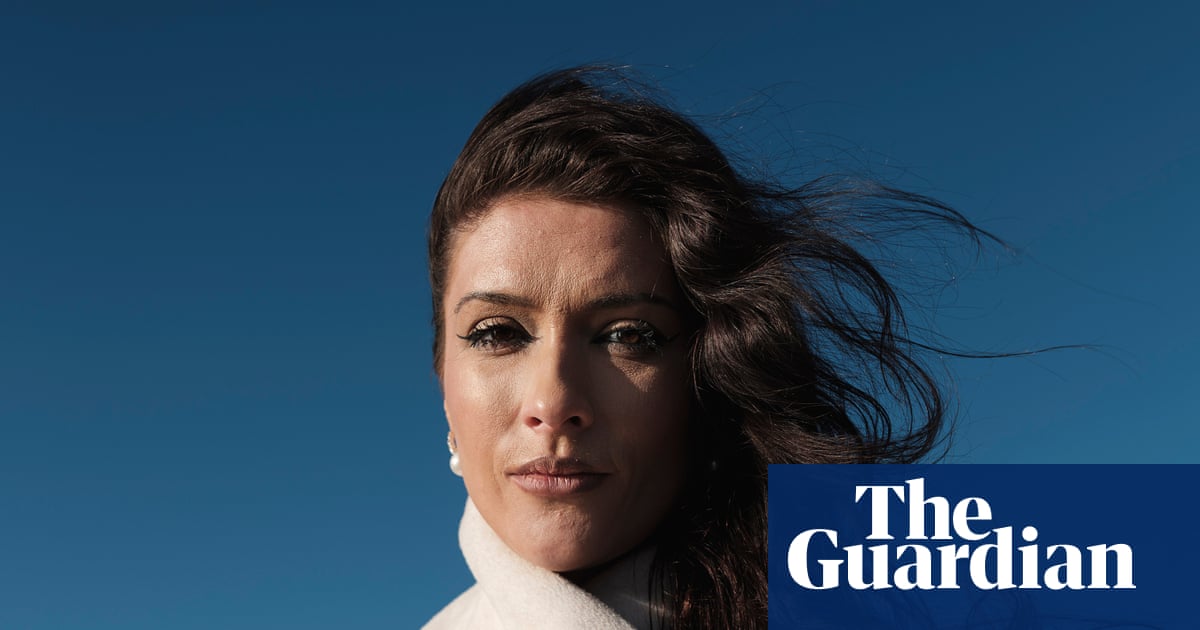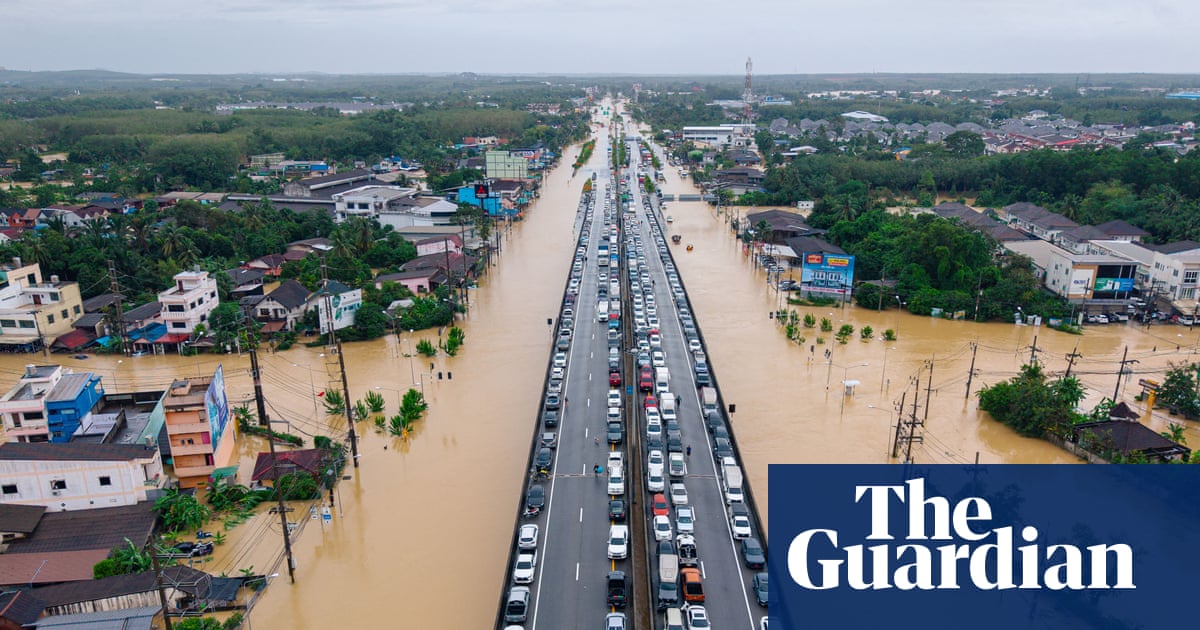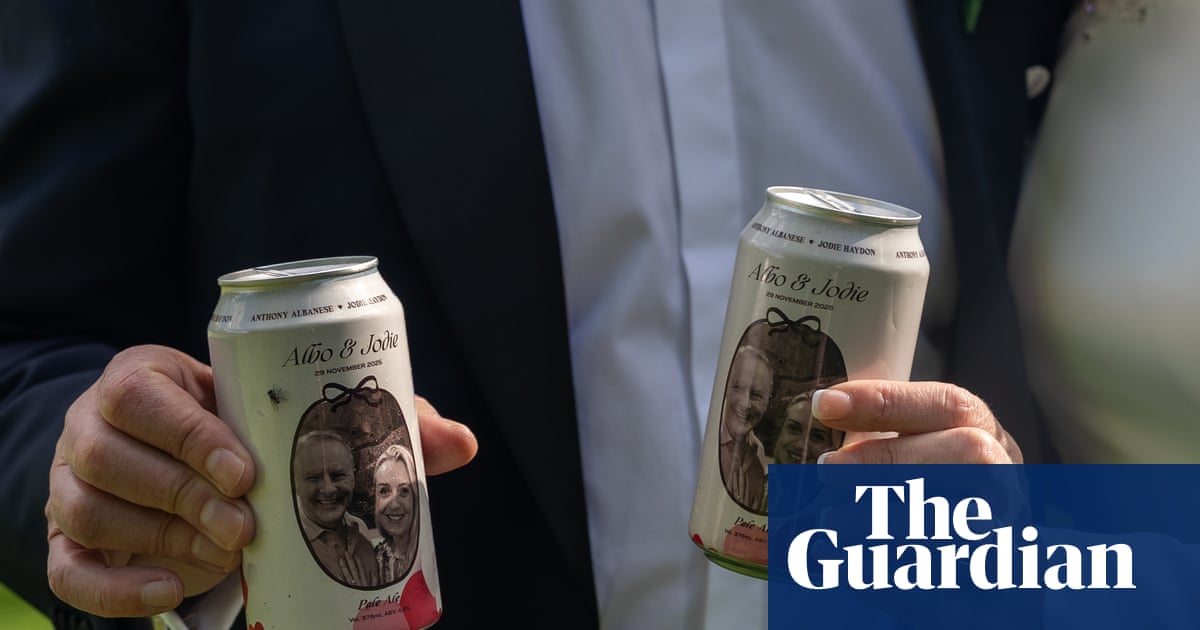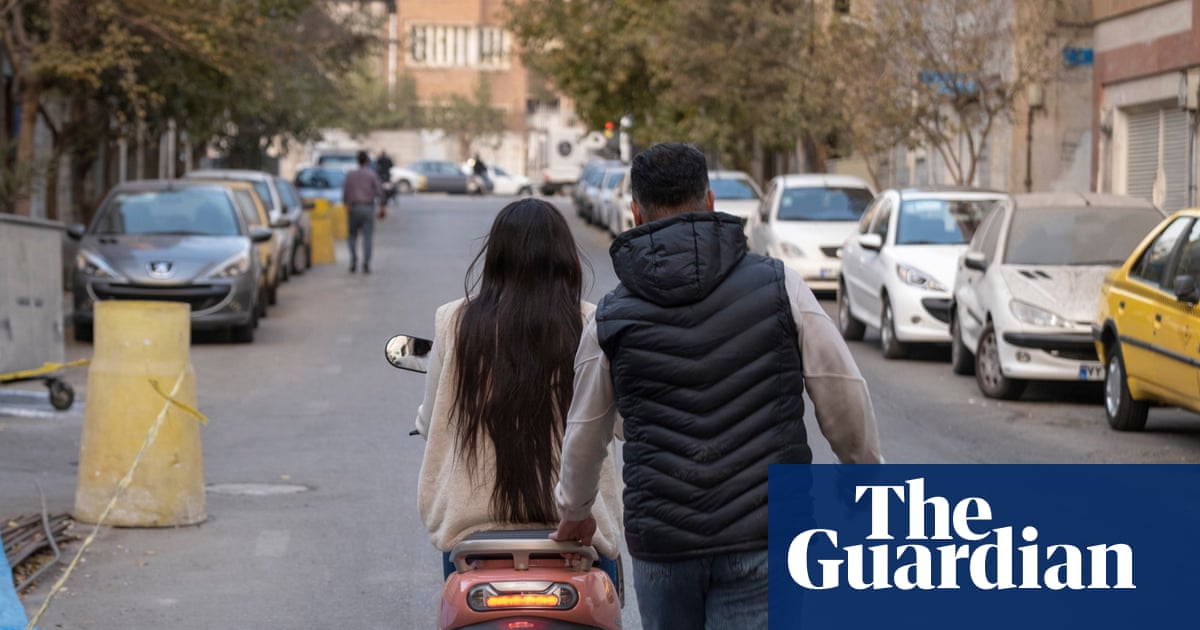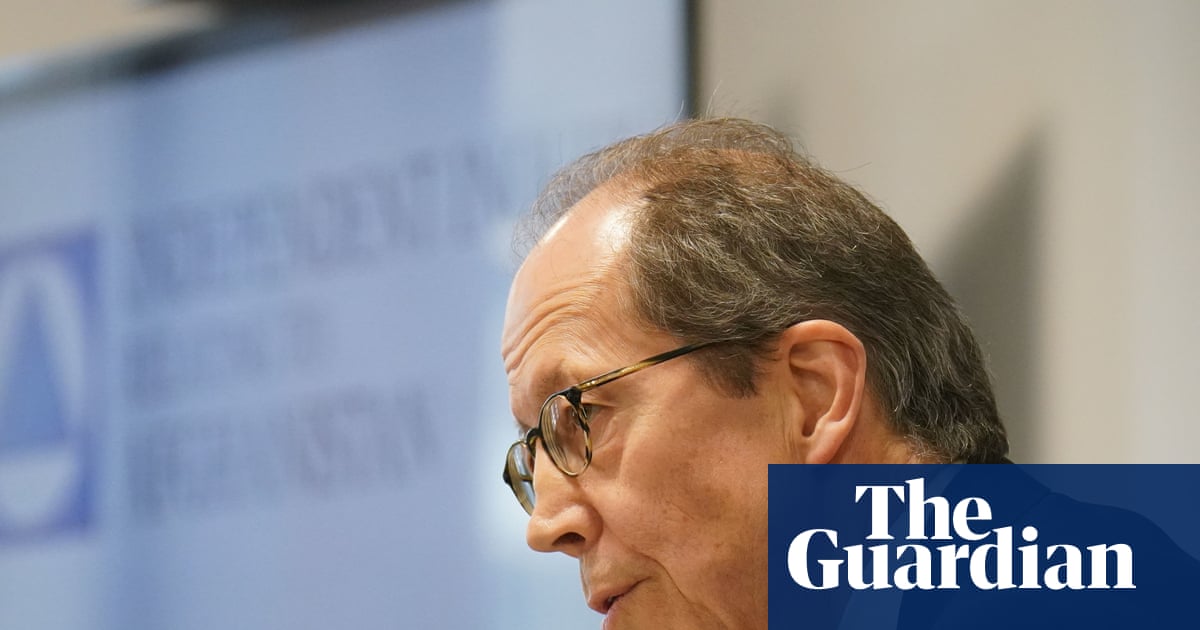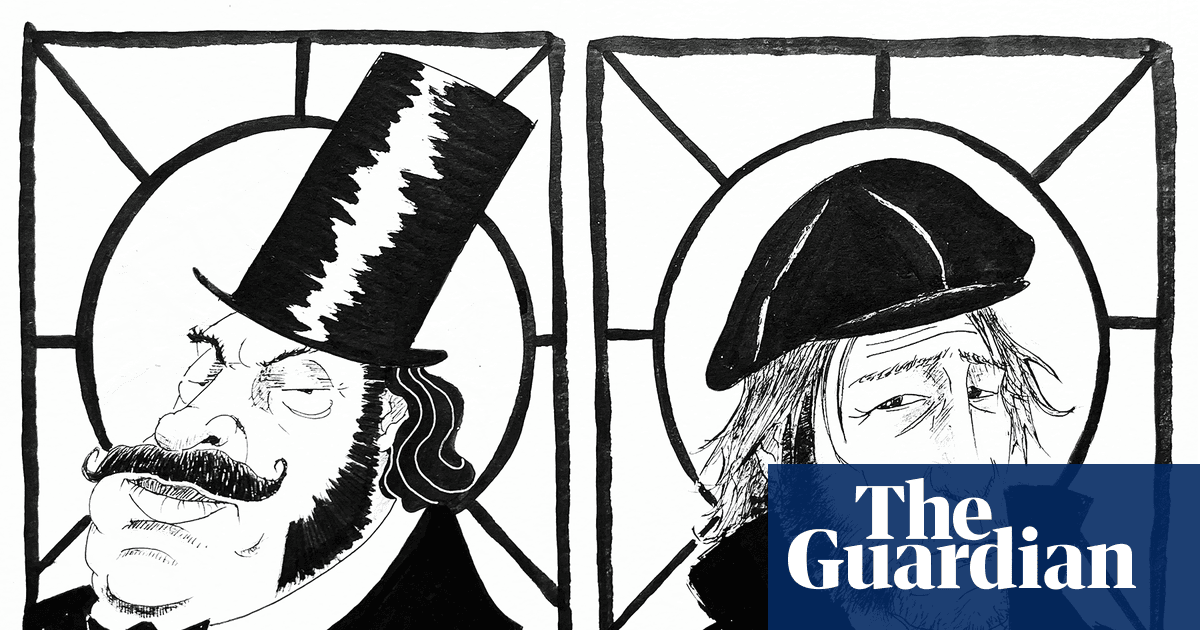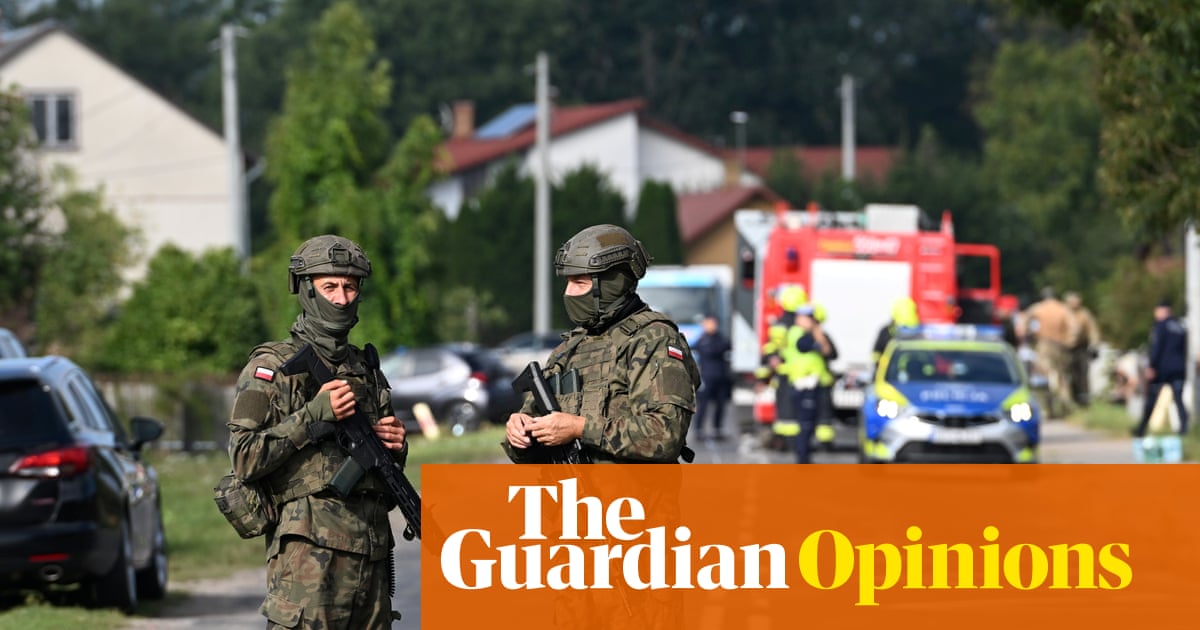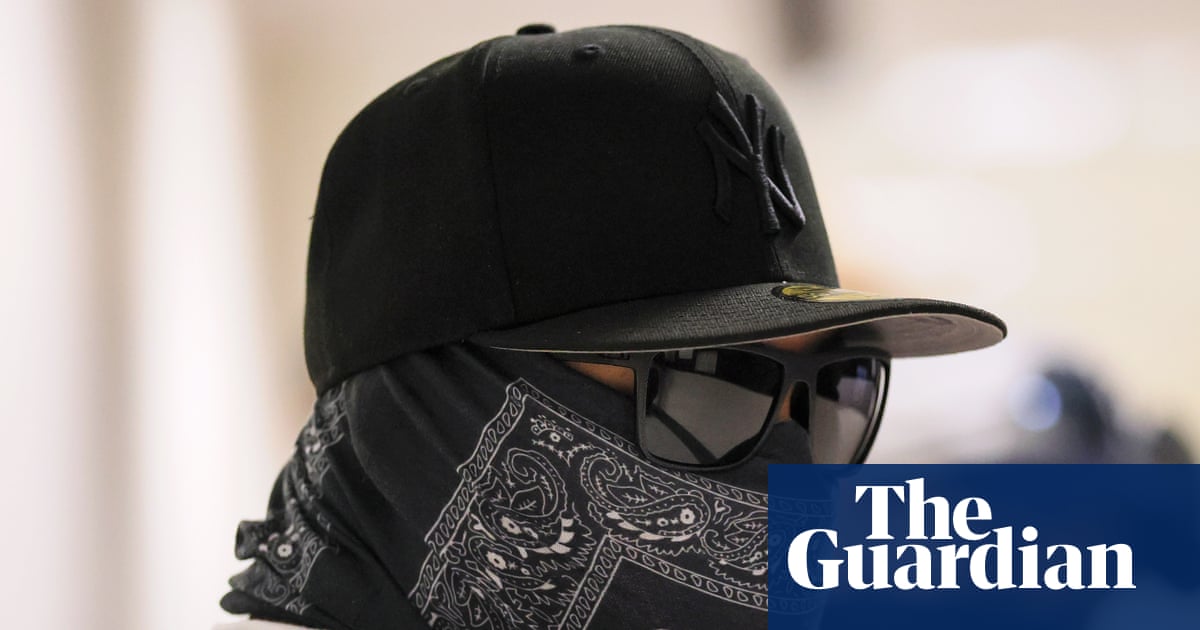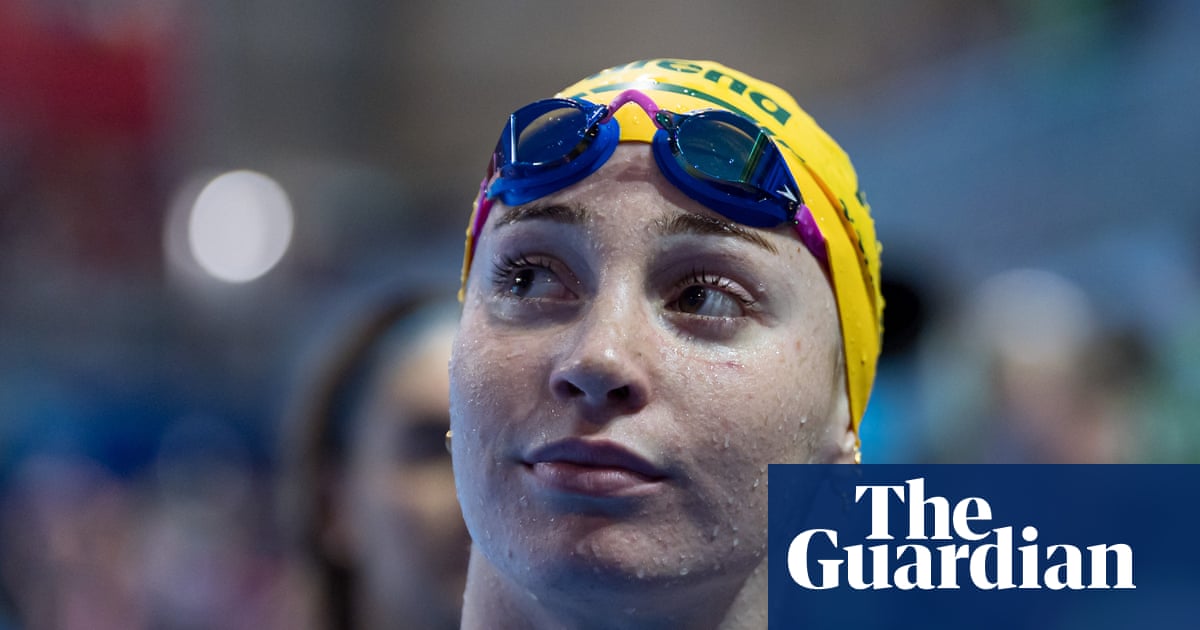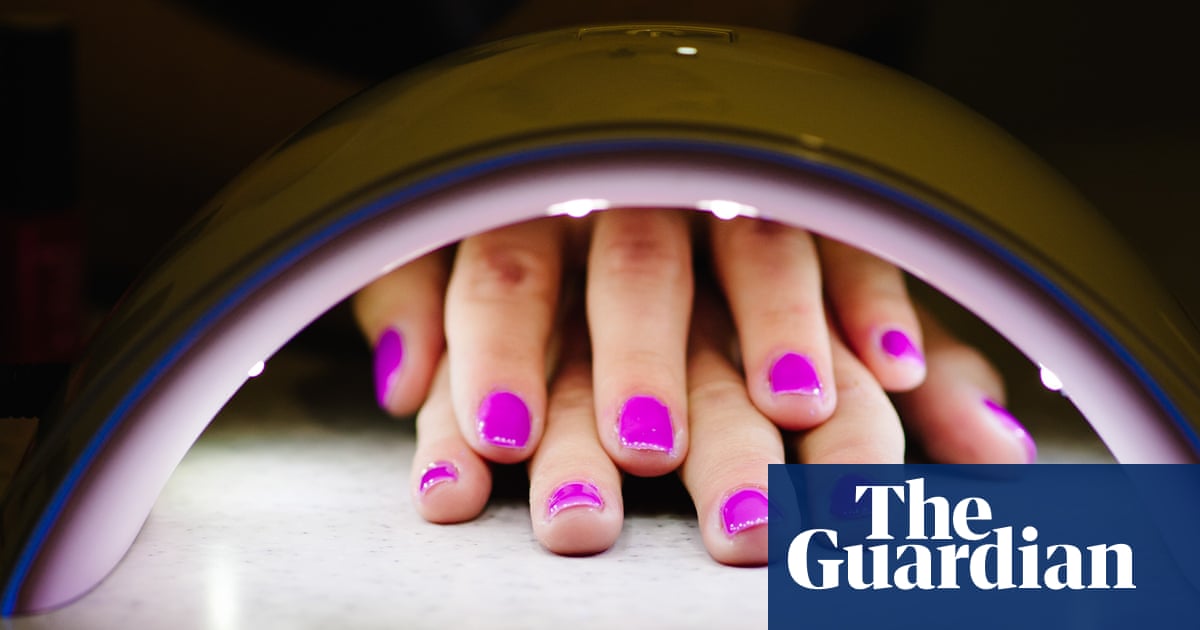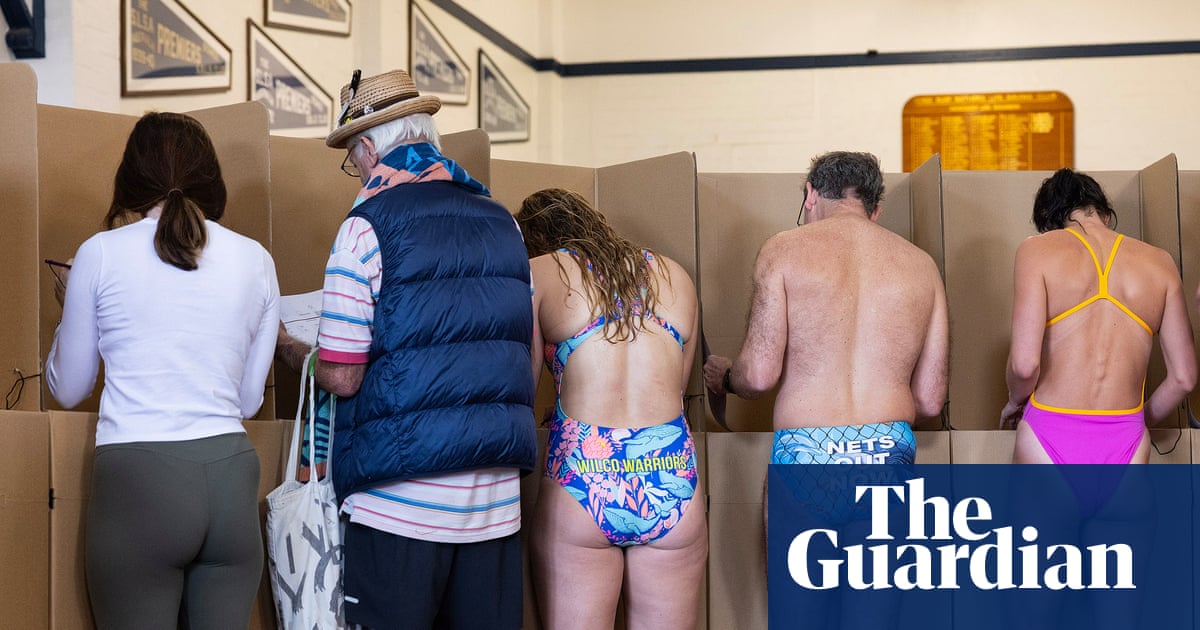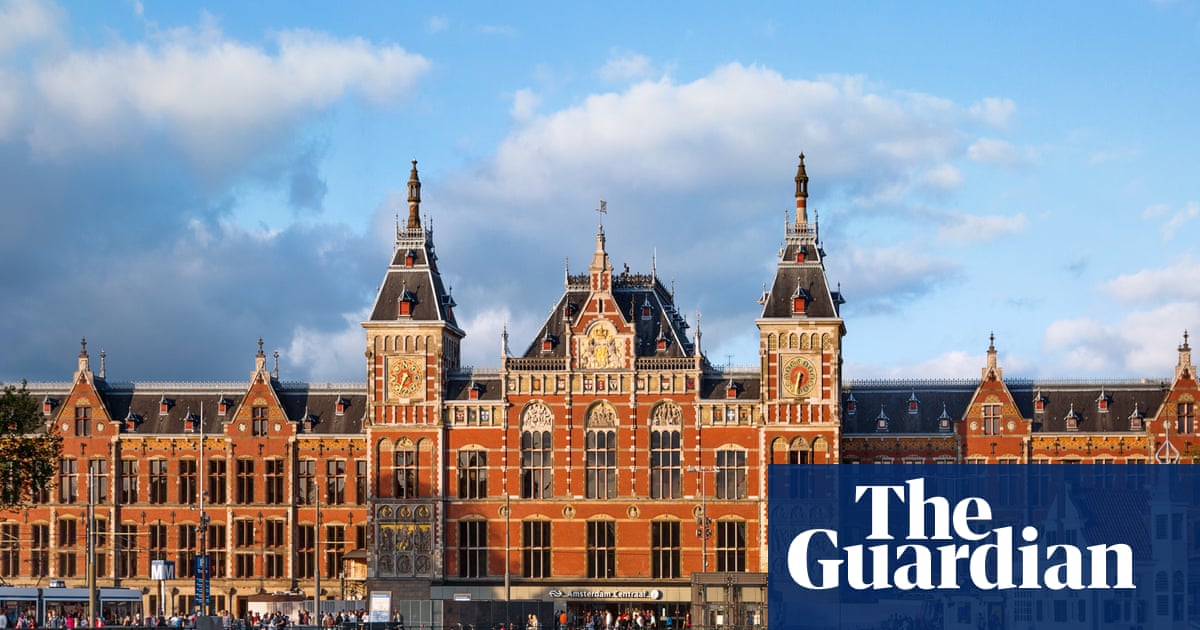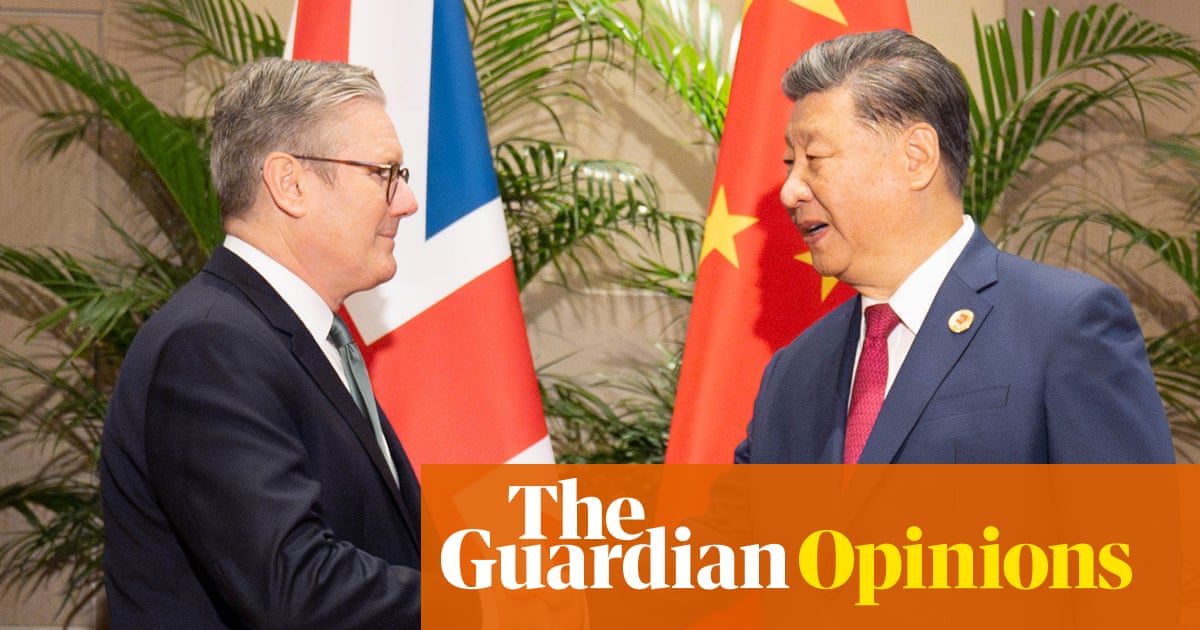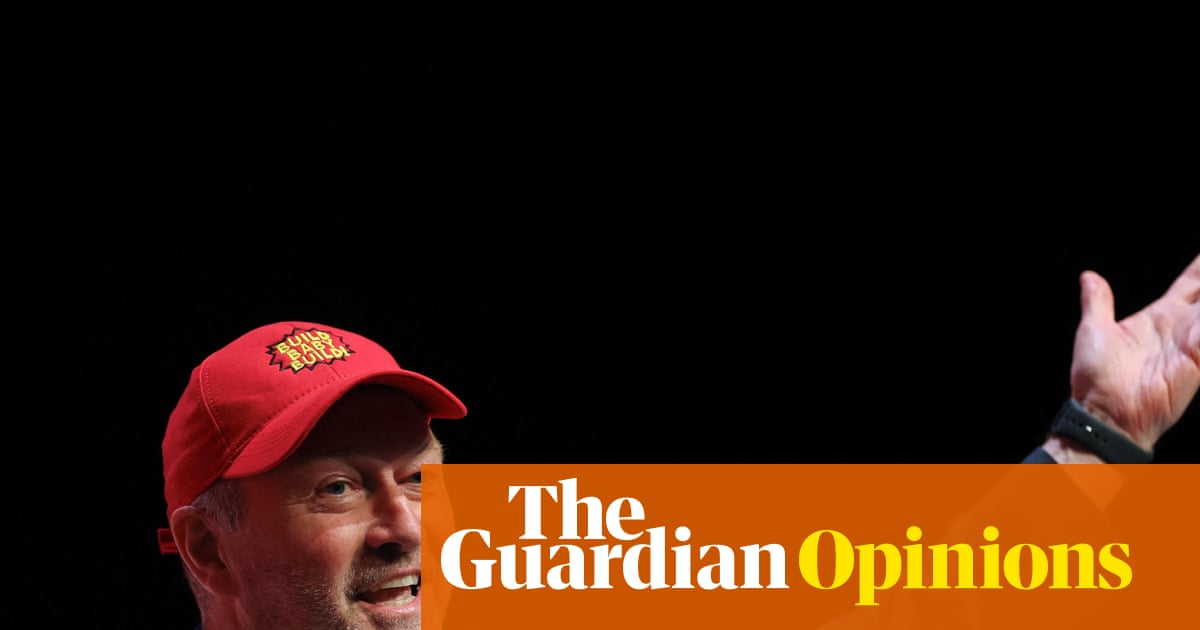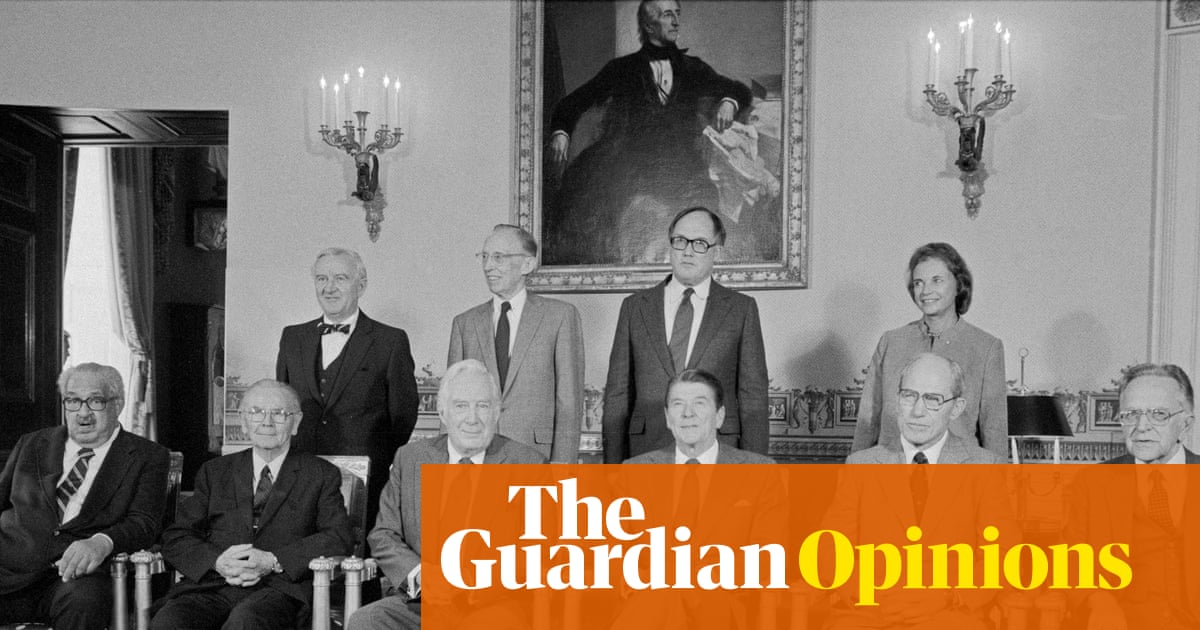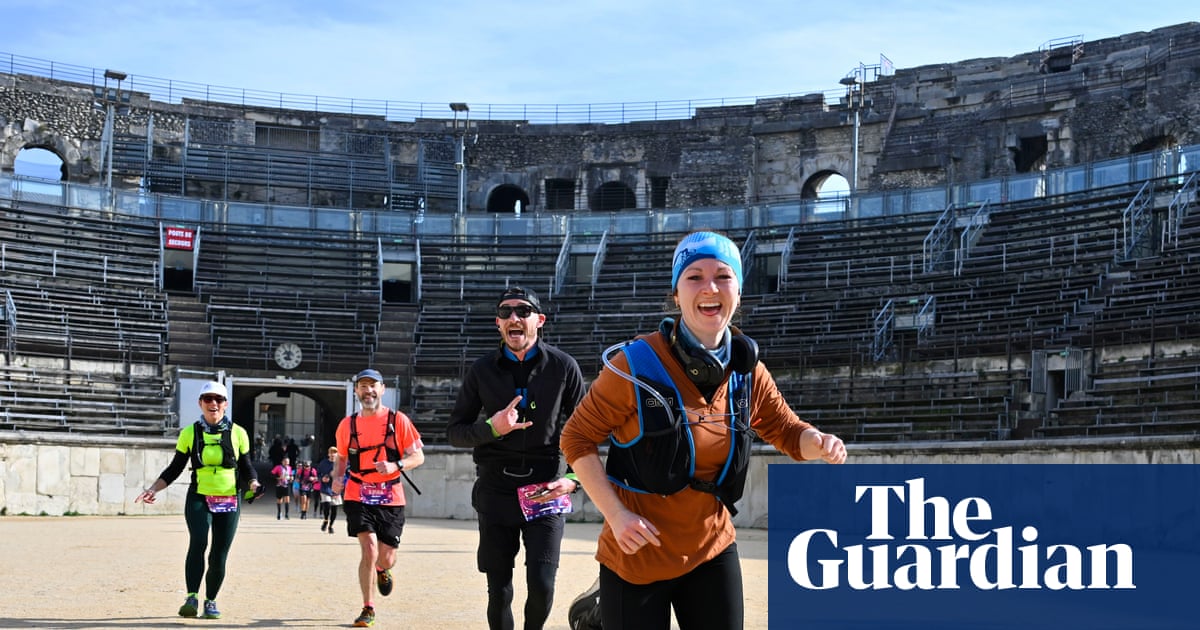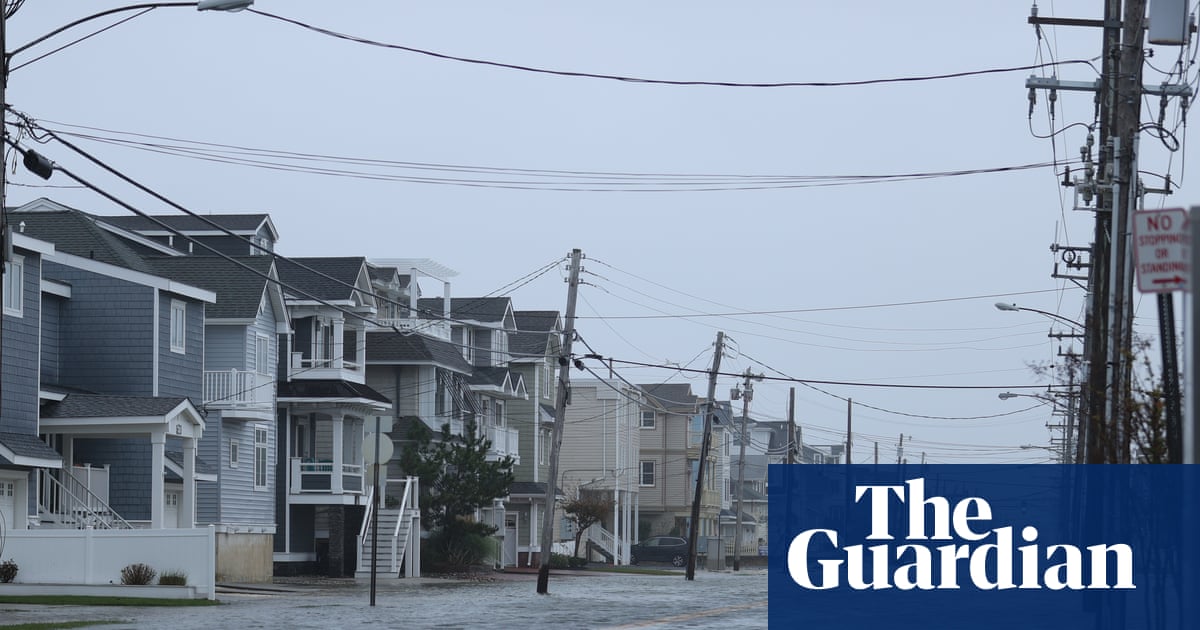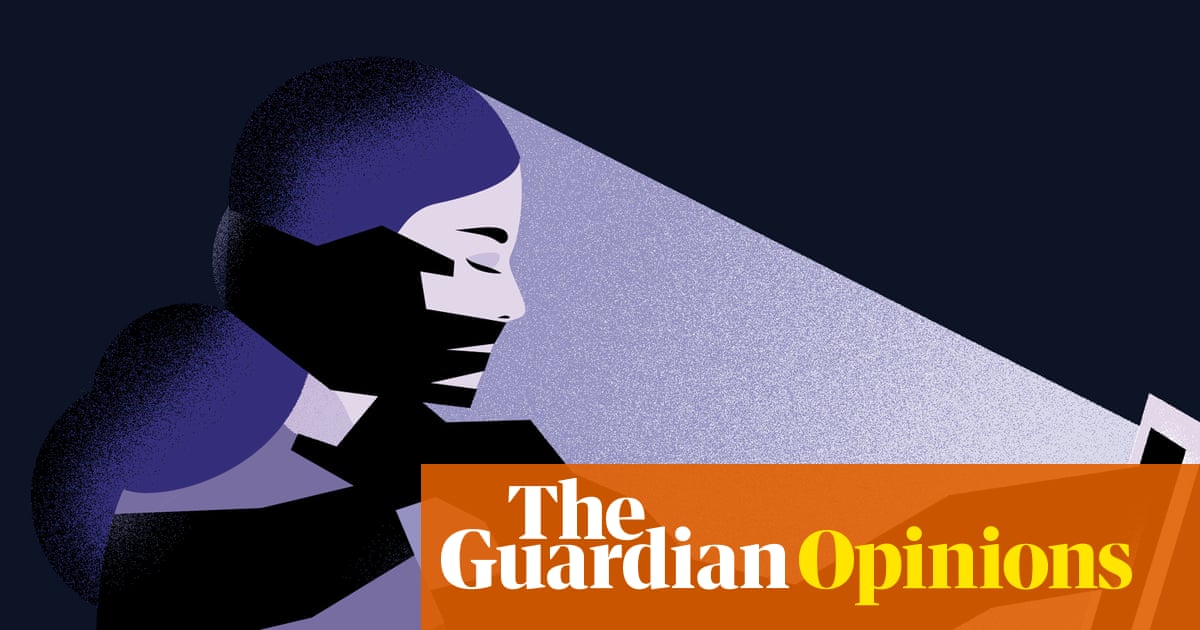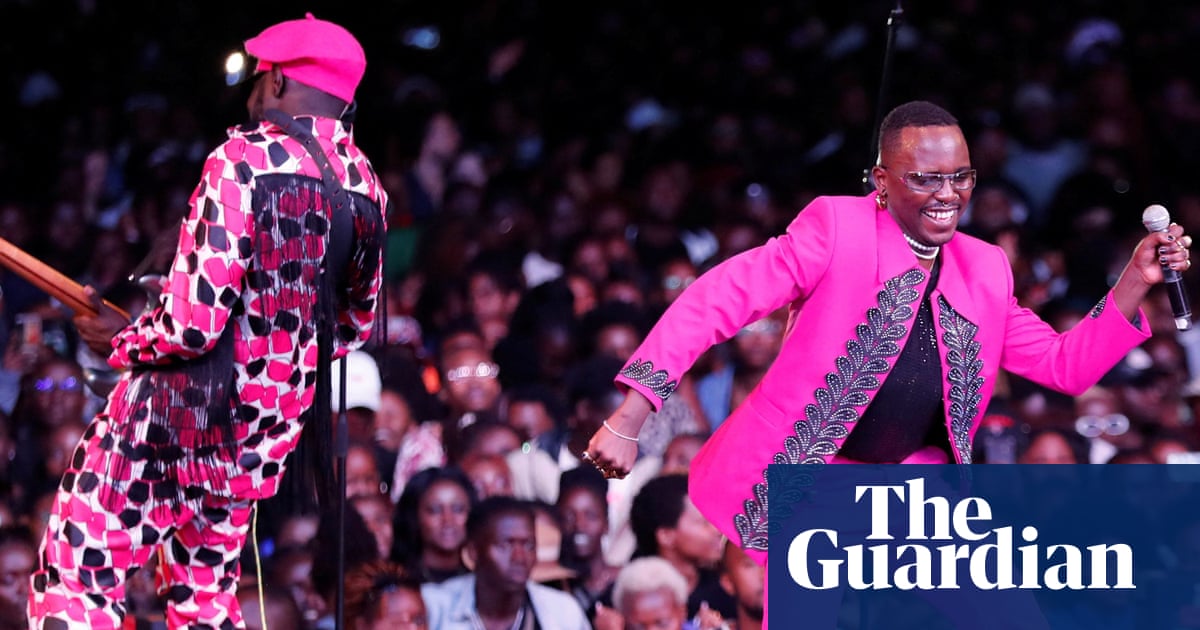Bethlehem, 1880-1900
Tatreez, meaning embroidery in Arabic, refers to a “specific cultural heritage practice of Palestine,” says Rachel Dedman, Jameel curator of contemporary art from the Middle East at V&A London. An ancient tradition, its heyday was in the late 19th and early 20th centuries, but it remains Palestine’s ‘most vital living tradition’. Regionally diverse, ‘every area of Palestine, down to neighbouring villages, had their own approach to the cut, to colour, stitch style, textile motifs’. This dress has been embroidered in the Bethlehem style.
Photograph: Sarah Duncan/Victoria and Albert Museum, London

Dress from Safriyya, 1920-1940
Recognised by the UN on the list of the Intangible Cultural Heritage of Humanity, tatreez has traditionally been passed down as a ‘form of matrilineal knowledge’. More than ‘merely art’, Dedman describes tatreez as ‘a language … metaphorically spoken among women’. The embroidery ‘that women put on their bodies reflected their identity, their character, their personality and, above all, their origins,’ says Dedman, who has overseen this exhibition in Dundee. The exhibition draws from the vast archive of the Palestinian Museum in the West Bank.
Photograph: Sarah Duncan/Victoria and Albert Museum, London

Southern Palestine, 1880-1900
This dress, one of the oldest in the collection, is, says Dedman, ‘beautiful in its simplicity’. It has the kind of pointed chest panel usually associated with Gaza, with sleeves more often associated with Bethlehem. Seemingly a hybrid design, its exact origins are not known, maybe because ‘we don’t know the specific embroidery traditions of every single village … this isn’t a written history, and so much of this lives in oral tradition’. It might also be because women ‘moved around, married into different places and families brought different traditions together’.
Photograph: Sarah Duncan/Victoria and Albert Museum, London
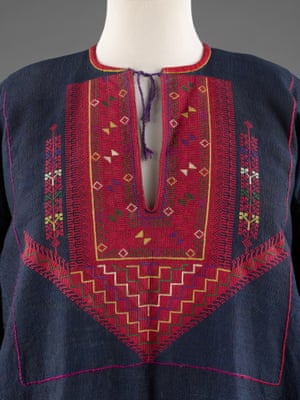
Dress from Gaza, circa 1920-1930
The exhibition points a particular spotlight on Gaza and includes five examples of dress from the historical area called Gaza, which was ‘larger than today’s strip and larger than just the city’. Known as an area that worked often with geometric embroidery, ‘you often see motifs of beams and combs and stuff that was connected to the practice of weaving’. The chest panel of this dress has a necklace motif – jewellery, says Dedman, ‘held a kind of talismanic, amuletic power’. Women in Gaza ‘would literally embroider that directly onto their chest’.
Photograph: Grant Anderson

Dress from Ramallah, 1930-1940
Some tatreez motifs are universal to Palestine – ‘a shared language’ – others are specific. The cypress tree is popular throughout, but ‘the Gazan one is slim and light, whereas the Hebron cypress tree is thick and dense’. Near Jaffa, which is famous for its oranges, you get ‘lots of really beautiful florals’. In ‘the villages of Jerusalem, you see work inspired by the Dome of the Rock, [while] in Bethlehem, [you see] imagery taken from churches’. In Ramallah, where this dress is from, you ‘find motifs connected to nature and everyday life’. For Dedman, the constantly evolving nature of it is a reminder that ‘this is fashion … women are eager for novelty … They’re thinking about what was beautiful, what was cool.’
Photograph: Sarah Duncan/Victoria and Albert Museum, London

Bedouin dress from Bir al-Saba’, 1930-1940
This is an example of the kind of looser cut dress predominantly worn by Bedouin women in Palestine. According to Dedman, they had ‘super long sleeves that would be tied behind their back or over their heads, even, to keep the sun off their heads’. Indigo, grown locally in Galilee, was often used to dye the base fabrics of Bedouin dresses in order to keep their wearers cool. The motifs of dresses from these regions, such as the prickly pear and camels, reflect life in the desert.
Photograph: Kevin Percival/Victoria and Albert Museum, London
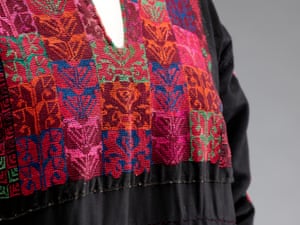
Widow’s dress, Bir al-Saba’, 1960-1970
Tatreez, according to Dedman, is a ‘way of mapping both the macro and the micro. In so many fascinating ways clothing can tell us about the big picture.’ This dress ‘introduces this idea that you can read in these tops something of the emotional, personal life of the wearer or maker’. Blue is the colour of grief in Palestine. ‘You see that the woman has clearly lost someone … and has put aside the bright colours for which Bedouin embroidery is known.’ However, you find ‘red or pink being reintroduced’: ‘a sign that a woman was ready for remarriage or to re-enter society.’
Photograph: Grant Anderson
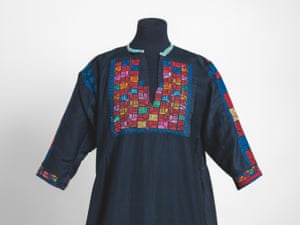
Beit Nabala, circa 1920-1930
This dress provides a gateway within the exhibition to talk about the 1948 nakba. ‘This moment of rupture when hundreds of villages were literally erased off the map’. The village where this dress is from was one of them. ‘Completely destroyed by Zionist forces’, according to Dedman, ‘this dress exists as a form of material evidence of the life and the people of that village.’ There are also signs of the individual – stains and evidence of motherhood, such as a flap for the wearer to breastfeed, which was later sealed. A section has been added: ‘The dress was given to someone perhaps a couple of inches taller.’
Photograph: Grant Anderson

Intifada dress, 1987-1993
After the nakba, tatreez became a form of resistance, ‘in both quiet and loud ways’. A woman wearing an embroidered dress became ‘this incredibly powerful symbol of Palestinian presence and identity’. This reached its zenith, according to Dedman, during the first intifada. In intifada dresses such as this one, more traditional motifs such as flowers mixed with a ‘new vocabulary of designs speaking directly to resistance’, such as the Dome of the Rock. It would have been stitched in secret, perhaps by candlelight in a village under siege. ‘A dress could be dangerous, and that’s what makes it powerful,’ says Dedman.
Photograph: Grant Anderson
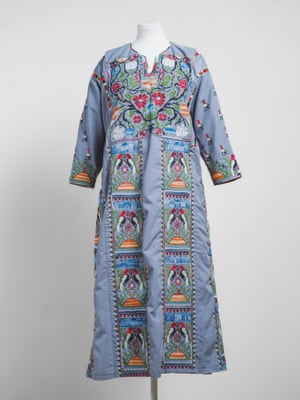
Embroidered dress, 2021, lent by Dundee councillor Nadia El-Nakla
This dress was worn by El-Nakla in 2023 for the swearing-in of her husband, Humza Yousaf, as first minister of Scotland. Bought on a trip to Gaza, she wore it, she says, ‘for myself, but also for my family from Gaza … [and] every Palestinian whose existence was a form of resistance.’ The response, she says, was overwhelming. Her brother in Gaza called her to say ‘everyone is talking about you.’ Tatreez, she says, is also a form of ‘remembrance of all those women that came before me.’ Through tatreez, she says, ‘you get the story of all the pain they’ve carried through war, exile and occupation.’
Photograph: Grant Anderson

An exhibition like this, says El-Nakla, is important. ‘The images that people see of Palestine, they connect it to war, at the moment, starvation.’ This display of craft ‘brings the Palestinians, it almost puts breath into their lives. We’ve existed for a really long time as a people and we had a place and we had a country and a land and that’s all been taken away. But this history shows that not only did we exist, but we still exist and that for me is really emotional.’ It is not, she says, only ‘about remembrance, it’s about survival.’
Photograph: Grant Anderson
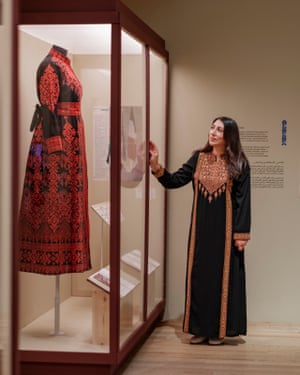
Dress from Gaza, 2000-2010
‘Perhaps the most important and moving object in the exhibition,’ says Dedman, this dress would have belonged to a girl. It belongs to Rafah Museum, ‘one of the museums in Gaza that was targeted by Israeli bombardments very early on in the current genocide’. When, in 2023, their collection was bombed, this dress was thrown onto a roof and rendered inaccessible for months. ‘It bears the marks of all that it’s been through,’ says Dedman. Representing just ‘a fraction of what the Palestinian people, and particularly those in Gaza, are and have been suffering’, it also, she says, ‘embodies the indestructibility of Palestine … this sense that despite all these horrors, Palestine will exist, will persist.’
Photograph: Grant Anderson
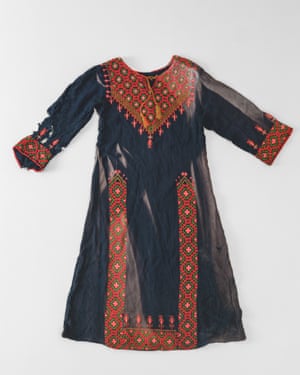
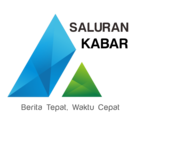
 3 months ago
53
3 months ago
53
